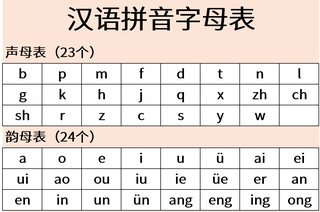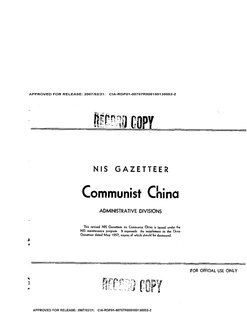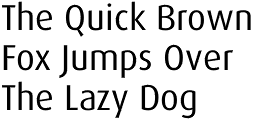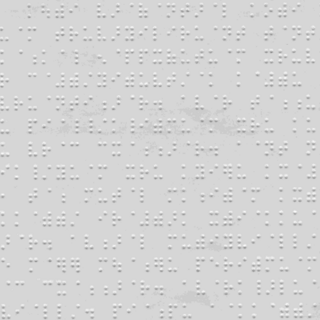
Hanyu Pinyin, often abbreviated to pinyin, is the official romanization system for Standard Mandarin Chinese in mainland China and to some extent in Taiwan and Singapore. It is often used to teach Standard Mandarin, which is normally written using Chinese characters. The system includes four diacritics denoting tones. Pinyin without tone marks is used to spell Chinese names and words in languages written with the Latin alphabet and also in certain computer input methods to enter Chinese characters.

Wade–Giles is a romanization system for Mandarin Chinese. It developed from a system produced by Thomas Francis Wade, during the mid-19th century, and was given completed form with Herbert A. Giles's Chinese–English Dictionary of 1892.

The modern English alphabet is a Latin alphabet consisting of 26 letters, each having an upper- and lower-case form. It originated around the 7th century from Latin script. Since then, letters have been added or removed to give the current Modern English alphabet of 26 letters with no diacritics, digraphs, nor special characters. The word alphabet is a compound of the first two letters of the Greek alphabet, alpha and beta.
Polish orthography is the system of writing the Polish language. The language is written using the Polish alphabet, which derives from the Latin alphabet, but includes some additional letters with diacritics. The orthography is mostly phonetic, or rather phonemic—the written letters correspond in a consistent manner to the sounds, or rather the phonemes, of spoken Polish. For detailed information about the system of phonemes, see Polish phonology.
Modern Literal Taiwanese (MLT), also known as Modern Taiwanese Language (MTL), is an orthography in the Latin alphabet for Taiwanese based on the Taiwanese Modern Spelling System (TMSS). MLT is able to use the ASCII character set to indicate the proper variation of pitch without any subsidiary scripts or diacritic symbols.

(Mainland) Chinese Braille is a braille script used for Standard Mandarin in China. Consonants and basic finals conform to international braille, but additional finals form a semi-syllabary, as in zhuyin (bopomofo). Each syllable is written with up to three Braille cells, representing the initial, final, and tone, respectively. In practice tone is generally omitted as it is in pinyin.
Tibetan Braille is the braille alphabet for writing the Tibetan language. It was invented in 1992 by German socialworker Sabriye Tenberken. It is based on German braille, with some extensions from international usage. As in print, the vowel a is not written.
Bopomofo, or Mandarin Phonetic Symbols, also named Zhuyin, is a Chinese transliteration system for Mandarin Chinese and other related languages and dialects. More commonly used in Taiwanese Mandarin, it may also be used to transcribe other varieties of Chinese, particularly other varieties of Mandarin Chinese dialects, as well as Taiwanese Hokkien. Consisting of 37 characters and four tone marks, it transcribes all possible sounds in Mandarin.

A semi-syllabary is a writing system that behaves partly as an alphabet and partly as a syllabary. The main group of semi-syllabic writing are the Paleohispanic scripts of ancient Spain, a group of semi-syllabaries that transform redundant plosive consonants of the Phoenician alphabet into syllabograms.

The different varieties of Chinese have been transcribed into many other writing systems.
This article summarizes the phonology of Standard Chinese.

Russian Braille is the braille alphabet of the Russian language. With suitable extensions, it is used for languages of neighboring countries that are written in Cyrillic in print, such as Ukrainian and Mongolian. It is based on the Latin transliteration of Cyrillic, with additional letters assigned idiosyncratically. In Russian, it is known as Шрифт Брайля.

Bharati braille, or Bharatiya Braille, is a largely unified braille script for writing the languages of India. When India gained independence, eleven braille scripts were in use, in different parts of the country and for different languages. By 1951, a single national standard had been settled on, Bharati braille, which has since been adopted by Sri Lanka, Nepal, and Bangladesh. There are slight differences in the orthographies for Nepali in India and Nepal, and for Tamil in India and Sri Lanka. There are significant differences in Bengali Braille between India and Bangladesh, with several letters differing. Pakistan has not adopted Bharati braille, so the Urdu Braille of Pakistan is an entirely different alphabet than the Urdu Braille of India, with their commonalities largely due to their common inheritance from English or International Braille. Sinhala Braille largely conforms to other Bharati, but differs significantly toward the end of the alphabet, and is covered in its own article.
The goal of braille uniformity is to unify the braille alphabets of the world as much as possible, so that literacy in one braille alphabet readily transfers to another. Unification was first achieved by a convention of the International Congress on Work for the Blind in 1878, where it was decided to replace the mutually incompatible national conventions of the time with the French values of the basic Latin alphabet, both for languages that use Latin-based alphabets and, through their Latin equivalents, for languages that use other scripts. However, the unification did not address letters beyond these 26, leaving French and German Braille partially incompatible and as braille spread to new languages with new needs, national conventions again became disparate. A second round of unification was undertaken under the auspices of UNESCO in 1951, setting the foundation for international braille usage today.

The braille alphabet used to write Hungarian is based on the international norm for the 26 basic letters of the Latin script. However, the letters for q and z have been replaced, to increase the symmetry of the accented letters of the Hungarian alphabet, which are largely innovative to Hungarian braille.
Similar braille conventions are used for three languages of India and Nepal that in print are written in Devanagari script: Hindi, Marathi, and Nepali. These are part of a family of related braille alphabets known as Bharati Braille. There are apparently some differences between the Nepali braille alphabet of India and that of Nepal.
Two-cell Chinese Braille was designed in the 1970s and is used in parallel with traditional Chinese Braille in China.
Irish Braille is the braille alphabet of the Irish language. It is augmented by specifically Irish letters for vowels that take acute accents in print:

Burmese Braille is the braille alphabet of languages of Burma written in the Burmese script, including Burmese and Karen. Letters that may not seem at first glance to correspond to international norms are more recognizable when traditional romanization is considered. For example, သ s is rendered ⠹th, which is how it was romanized when Burmese Braille was developed ; similarly စ c and ဇ j as ⠎s and ⠵z.
The Cantonese Transliteration Scheme, sometimes called Rao's romanization, is the romanisation for Cantonese published at part of the Guangdong Romanization by the Guangdong Education department in 1960, and further revised by Rao Bingcai in 1980. It is referred to as the Canton Romanization on the LSHK character database.










